With Tony Dold, Selmar Schonland Herbarium, Grahamstown.
This essay was published in Aloe 40:10, 2003. Minor additions are made here.
Introduction
By way of introduction it is fitting to repeat Dyer’s (1937) note on the Karroid Scrub of the Albany Division … “Pluto’s Vale and Hell’s Poort, names suggesting places of an unenviable reputation, are on the roads from Grahamstown through the Fish River valley to Kingwilliamstown and Bedford respectively. Certainly very hot passes during the summer, they are nevertheless the homes of many botanical treasures, particularly succulents. Several species of Haworthia are present (in the Albany division) but the soft leaved ones are usually found under the protection of rock ledges or scrub. Pluto’s Vale is the home of two rarities, H. incurvula and H. tenera, both described recently by von Poellnitz”.
The genus Haworthia is fairly difficult to classify, but Dyer’s words reflect the uncritical way in which any new species or variety is accepted into the literature. Bayer (Aloe 36:34, 1999) discusses the two ‘species’ noted by Dyer and the complexity of their relation in Pluto’s Vale. Bayer did not deal with the geological factors which might underlie their relationship, but this is implicit in the various books and papers he has authored and the reliance he has placed on geographic considerations. In a new publication (see chapter 7) Bayer has also explored the relationship of Haworthia species on the northern slopes of the Zuurberg in the Kaboega area. Here it is evident that geology and habitat are key factors in determining relationship between similar elements to H. incurvula (H. cymbiformis var. incurvula) and H. tenera (H. gracilis var. tenera). In both cases the same key species viz. H. cooperi (to include H. gracilis) and H. cymbiformis, are involved. As in the case of Pluto’s Vale, the species, H. gracilis comes into question too. This latter species has a questionable taxonomic history, but it was at the last considered to have originated in Helspoort (Afrikaans) to the north-west of Grahamstown. While mentioning here, based also on recent publication of a possible type illustration (Breuer, 2000), that it may not have come from Helspoort at all, and may in fact be synonymous with what Bayer (1999) has taken to be H. aristata. As discussed in Haworthia Update, there is a problem with the recognition of the Helspoort “species” in the face of the broad range of variant populations which constitute H. cymbiformis, H. cooperi, H. bolusii, H. gracilis and H. aristata and all the varieties associated with them. A recent excursion was made to Helspoort to establish if the variation of the Zuurberg, Pluto’s Vale and the Baviaanskloof Haworthias was also evident.
We speculate that the difficulty in dealing with genera like Haworthia, is that such small succulents favour skeletal sites where inter-plant competition is low because of shallow soils and surface rock. It has been noted several times that a species may change facies depending on site and this has been reported for H. mucronata var. mucronata as it occurs on shales, and H. mucronata var. habdomadis as an ecotype of the same species occurring in sandstones (Bayer, 1999). A similar situation has been reported for H. cooperi var. pilifera on Ripon Sandstone, as opposed to H. bolusii var. blackbeardiana on shale near Ripon Station (Bayer, in ms.). Broad indications are that elements as different as H. cooperi var. pilifera and H. cymbiformis var. cymbiformis may be ecotypic, because the former is essentially a flat level grassland, and the latter a riverine-cliff element.
Apropos to Dyer’s note, it is only the two Haworthia species and H. attenuata var. britteniana that lend any particular significance to Pluto’s Vale, however diverse and extraordinary the vegetation there may be. There is no single plant species that lends any particular significance to Helspoort. The same in fact can probably be said for the whole Kaboega area of the Zuurberg, where four biomes are said to meet (Bruton and Gess, 1988). Recently there was a report on Faucaria nemorosa (Aloe 38:37, 2001) from Swartwaterspoort. My immediate response is to ask … “What is peculiar about Swartwaterspoort and how does this relate to Haworthia?” A “species” in a landscape as “ordinary” as Swartwaterspoort should not be expected to harbour something uniquely discrete. The answer is that Haworthia cymbiformis does occur there and its variants are notable (Fig.8), but barely outside of the context of the variability of the genus itself. Thus the broader question of vegetation can and should be examined when establishing the classification of Haworthia, or in fact any other genus. The object thus of this paper is to report findings at Helspoort and discuss, together with the already reported observations at Pluto’s Vale and Kaboega (Zuurberg Mountains), the taxonomic implications relative to vegetation and geology.
Observations
The details of the Haworthia populations observed for Pluto’s Vale and Kaboega are given in Haworthia Update. It was only possible to spend one morning at the Helspoort site and four collections of H. gracilis were made. These are:
- MBB7051, on an upper south-west facing slope on the edge of Bush thicket, west of the road
- MBB7052 (Figs.3, 4, 5), in a low lying level area at the base of the valley, under Pteronia incana.
- MBB7053 (Figs 1, 2), on a rocky north facing slope also low down in the valley, with Euphorbia polygona.
- MBB7054 (ex T. Dold), in rocks above the valley on the north-eastern side.
The plants are all very similar, unlike the Pluto’s Vale populations and certainly not as diverse as the Kaboega ones. None were as spinose as the unpublished Berlin illustration (Fig. 6), but they do accord with the Desert Plant Life illustration (Fig.7) which has otherwise been taken to represent the species (unfortunately more significance is attached to, and more is written about, frivolous aspects of nomenclature rather than the use and application of names). The plants are pale green in colour and moderately to almost non-spinose. In the population MBB7052 under Pteronia incana, the plants were more blue-green in colour with slightly more obtuse and thicker leaves suggesting closer similarity to H. cooperi var. pilifera. This element is quite common in the area and occurs in more typical form both to the east at Piggots Bridge, nearer to Grahamstown at Table Farm and also at Vaalkrans, Thornkloof and Brakkloof farms. H. cymbiformis is not known closer than Swartwaterspoort west of Riebeek East (Fig.8), at Alicedale, at the farms Thornkloof in the south, and The Fort to the east. There are no recent confirmed collections of a gracilis-like element in the Grahamstown area, other than as mentioned in Bayer (1999). The closest affinities are a glabrous element from Gladhurst and a similar element from Elandskop, both south of Adelaide. These are similar to the cooperi-like elements described for the Zuurberg (Fig.9). H. aristata is nearest at Kommadagga, west of Riebeek East. This is certainly a product of under-exploration and unconfirmed collections from the Brakkloof ridge running east and west of Helspoort, as well as from the Fish River Rand heights north of the Fish River all need to be explored.
Geology
The basic geology and topography is illustrated in Figs 10-14 – as accurately as the original maps permit. The geological formations at each area are essentially the same, particularly for Pluto’s Vale and Helspoort.
These are Dwyka, Ecca and Witteberg groups, which are characterised as follows:
- Dwyka – tillite, consisting of dark blueish‑grey, very poorly sorted, massive diamictite of glacial origin.
- Ecca – shale, carbonaceous shale & tuff, Fort Brown shale formation, Ripon sandstone & shale formation.
- Witteberg – quartzite of the Witpoort formation and Witteberg shale, quartzite, sandstone & diamictite of the Lake Mentz subgroup.
Soils
The underlying geology ultimately determines the soil type although climatic factors in the weathering process would have considerable effects on the result. Because the underlying geology of all three study sites is very broken and incised, the soils are directly influenced by geology than in the case of more mature formations that are less incised or topographically less rugged and broken. Thus some of the habitats are practically skeletal and parent rock, and what soil there is overlies rock or partially weathered rock (Hartmann 1988). Pluto’s Vale (Figs.11,13,16,17) is characterized by weakly developed lime-rich soils, while Helspoort (Figs.10,12, is similarly characterized by weakly developed soils of rocky veld with a strong sandstone contribution. The western Haworthia locality in Helspoort is on Witteberg Quartzite, where the soil is thus sandy, nutrient poor and well‑drained. The central locality is on shale while the eastern locality is on Dwyka tillite that both result in a clay rich soil with more nutrient and greater water holding capacity. The plants from Pluto’s Vale are also on Dwyka tillite and on Ecca shale, sandstone is absent. The Kaboega area (Figs 14,15) is at another scale and almost any aspect and soil type concordant with the geological formation and broken topography can be encountered. In addition, at Kaboega there is a declining rainfall gradient from east to west, as well as rain-shadow effects.
The subdivisions and variants of the parent geology make it extremely difficult to generalise about the soil and the scale of the geological maps also make it be quite inappropriate for comment on soil. Furthermore there is the question of aspect too. South slopes are cooler and moister than north slopes and soils tend to be deeper. Deep rocky ravines result in sites which are shaded and cooler for different periods of the day. On the scale of Kaboega, altitude is also critical and a rainfall gradient is pronounced as opposed to Helspoort and Pluto’s Vale localities where site moisture is very locally determined.
Rainfall
Rainfall can be related to distribution of Haworthia species, but we do not think it is significant except in respect of the scale at which we are dealing. The study sites fall in a zone of approximately equal summer and winter rainfall, often with good late summer rain in March, which have a carrying over effect well into the winter period. However, the higher ridges and hills receive a greater rainfall than the lower valley levels, which also have higher temperatures. Rain coming from the coast is generally intercepted by Botha’s Ridge at Grahamstown and thereafter rainfall decreases greatly decreases towards Committees Drift and Fort Brown (Dyer 1937). The average annual rainfall at Pluto’s Vale is 500mm while that of Helspoort 482mm. The average annual rainfall at Kaboega is significantly lower at 289mm (Dent, Lynch & Schultze 1987).
Plants on the higher mountain slopes with a south or south-eastern aspect will also benefit greatly from condensation from mists from the sea, mostly during summer months. The Haworthia population at the higher western‑most locality at Helspoort would certainly be affected by these incoming mists whereas those on the central and eastern localities, being on the leeward side of the catchment, would not. Moreover the latter would experience higher temperatures than the former. At Kaboega, the entire Zuurberg range intercepts rain and mist from the south-east, and there is a rainfall gradient declining from east to west.
Vegetation
Haworthia and many smaller plants are elements of the broader vegetation and usually constitute that element which deviates from the characteristics of any recognised phytochorion. This is probably because they cannot compete against the larger plants, grass, trees and shrubs which constitute ‘vegetation’ as seen by the vegetation ecologist. They occupy habitats which are hostile to larger and deeper rooted plants.
The flora of the Albany district reflects a meeting point of various phytochoria (Cape, Tongoland/Pondoland, Karoo/Namib) and a great diversity of vegetation types can be found within a radius of 150km of Grahamstown (Lubke et al 1988). The vegetation type of Pluto’s Vale is clearly Valley Bushveld (Acocks veld type no. A23) but that of Helspoort comprises Valley Bushveld on the steep slopes of the poort with False Fynbos (Acocks veld type no. 70, Grassy Fynbos of Low & Rebelo 1996) on the flat summits and karoo influences (False Karroid Broken Veld, Acocks veld type no. 37) on flat, low lying areas.
The vegetation as described by Low & Rebelo (1996) for the Zuurberg is Grassy Fynbos (Acocks veld type No. 65). This is endemic to the Eastern Cape from the Kouga Mnts to Port Elizabeth, and on the Grootrivierberge from Steytlerville to Grahamstown and Bushmans River Mouth, mainly on the mountain tops. Grassy Fynbos replaces Mountain Fynbos in areas where the component of summer rainfall increases; the Restios are replaced by grasses and the Proteoid elements replaced by small-leaved shrubs and succulents (e.g. Aloe). Due to the increase in grass‑fuel, fires are more frequent in Grassy Fynbos than Mountain Fynbos.
Factors influencing Haworthia populations
The western locality of Helspoort is on the margin of False Fynbos, which coincides with the well-drained, nutrient-poor, quartz‑derived soils, incoming coastal mists and cooler temperatures. The central locality is on shale that is richer in nutrient and has a higher moisture holding capacity. The vegetation is False Karoid Broken Veld that does not receive additional moisture from coastal mist and has higher temperatures. This locality is locally dominated by Pteronia incana, a pioneer shrub that indicates poor veld management and disturbance, particularly in this veld type. It is unlikely that this is a factor in the occurrence of the Haworthia in MBB7052. What is evident in nearly all Haworthia populations anywhere is that the habitats are disturbance resistant – either from fire or from physical animal trampling and grazing. In the absence of any management at all, however, rocky sites and ravine, cliff and valley margins, do become severely degraded with a negative impact on Haworthia on such sites.
The eastern locality at Helspoort is on Dwyka tillite that has a high moisture holding capacity. The vegetation is consequently Valley Bushveld and does not receive the coastal mists or cooling winds which results in drier, hotter conditions similar to the central lower locality. However, the vegetation is less disturbed and the plants are more protected by surrounding vegetation and protruding rocks.
The rainfall difference between Pluto’s Vale and Helspoort is insignificant. The plants at Pluto’s Vale, south of the road, grow in weakly developed, shallow, lime-rich soils overlying Dwyka tillite in dense Valley Bushveld. The plants are also on the southern aspects. North of the road and all the way to the eastern exit from the valley, are the steeper solid rack faces of Ripon sandstone. The only significant difference is probably that of parent material and scale of exposed rock. Where there is a single population of H. cymbiformis var. incurvula, it is on fragmenting blue Ecca shale. The very nearby population of the H. gracilis var. tenera intermediate is in an area with tumbled rock and a product of a disturbance event of some kind. The north-western cooperi-graciloid element is again on a Dwyka formation.
At Kaboega, it is clear that the cymbiformis and cooperi-graciloid elements are predominantly on Dwyka Tillite and on the southern slopes. The cooperi-piliferoid elements are in the higher lying margins between Fynbos and either Valley Bushveld or remnant forest. The aristata elements are evident in the dryer, either low-lying, or relatively high north-facing dry sites. However, it is quite evident that substrate is only contributory and the clinal nature of the variation between populations dramatically portrays the spatial arrangement. Within this spatial arrangement it is also evident that polytopic similarities occur. The cooperi-piliferoid element is here at its westernmost, but the cymbiformoid element is polytopically a distinct element at the very western-most population indicated on the map.
Similarly there are two widely separated, almost teneroid, populations of plants which are highly site specific on vertical ferruginous quartzite in one case, and white purer quartz in the other. At the western most of these two sites, two populations occur within 25 meters of each other. They flower and seed simultaneously and the most probable relationship is that of ecotype as deduced from the general continuity between all the Kaboega populations of this ilk. One population is the teneroid (or graciloid or isabelloid) element) and the other is piliferoid/aristatoid. The latter is in dense grass over boulder-like terrain and the other (Fig.9 – ‘puberula’ in the preceding chapter) is on several small outcrops of vertical shaly-quartzite – also the home of Euphorbia polygona. The other population consists of plants that are smaller, fairly proliferous and very spinose with tiny spines too.
A few very similar plants to the last mentioned, were found to the east where they seemed to grade locally westward to a cooperoid element, but eastward to a small population on whiter quartzite, where the plants are unusual in having surface spination as well. Usually such spination is on leaf margins and keels. This surface spination does occur in a single population of H. cooperi (i.e. var. venusta from near Alexandria) and also in a single (known) populations of H. gracilis var. isabellae from the Longkloof. However, sparse surface spination is fairly common in H. decipiens, in H. nortieri and to a small degree in H. arachnoidea.
The species H. cymbiformis, which is what the western-most of several populations clearly resembles, is only known again at Enon, east of Kirkwood and south of the Zuurberg. The particular site of this “look-alike” is a much bolder rockface than any of the other south-facing Dwyka slopes.
The populations on Kaboega (apart from H. glauca) are not widely distributed and populations can be highly site-specific. It should be noted that H. angustifolia var. baylissi, occurring a few miles east of Kaboega, does not appear in the study area. There is no indication of the speculated connection of this species to more western counterparts viz. H. zantneriana and H. monticola. H. glauca var. glauca (in a form suggesting intergradation with H. coarctata at the western-most of the populations observed) occurs very abundantly on the rocky ridges on the upper north slopes of the Zuurberg, and also on the west facing slopes of the ridge south of Klipfontein farm. H. sordida occurs (as known) at a single site under Elytropappus rhinocerotis (renosterbos), and H. nigra is also present at a single, similarly highly localised site on ancient boulder debris under largely Pentzia incana. H. viscosa is absent. Curiously, Astroloba foliolosa is also represented by one known population on what must be the remnant of ancient river terrace near to, but several meters above, the present course of the Kaboega river. There are many other such species singularites on Kaboega which could be described in terms of geology, aspect and altitude but information which would be extremely difficult to synthesis in any particular way. For example, Euphorbia tetragona is present in highly localised places and the plants are all very tall and old with no evidence of recruitment. Euphorbia stellaspina, E. polygona, E. silenifolia, Faucaria felina, Aloe microstigma, A. pluridens, A. speciosa, A. tenuior, A. ferox, A. striata, Piaranthus disparilis, Duvalia caespitosa, Tridentea (Stapelia) longii, Quaqua pillansii, Huernia brevirostris, H. guttata, and H. campanulata are all present and largely as site-specific populations independent of the Haworthia populations. Cyrtanthus angustifolius, Haemanthus humilis and Dioscorea elephantipes are also present and localised. So while these elements may all have specific habitat requirements, it will be an awesome task to explain all the minutae which may account for their disparate occurrences.
Conclusions
Haworthia species are invariably found where there is exposed rock and where the vegetative cover is low and sparse. Rainfall, soil and vegetation are of general significance but we consider that it is geology which may play the predominant role in explaining variability and hence ecotypification. We explain this as follows:-
a. Plutos Vale – evidence is that Dwyka seems to support H. cymbiformis var. incurvula. On the more quartzitic Dwyka series it transforms to a more cooperoid-graciloid element, while to the Ripon sandstones it becomes teneroid.
b. Helspoort – on the heavier low-lying soils the graciloid element becomes more cooperi-piliferoid.
c. Kaboega – the cooperoid and graciloid elements are in the quartzitic formations, the cymbiformoid in the Dwyka tillite, and the aristatoid in the Ecca and Ripon shales.
The cooperi-graciloid elements of Pluto’s Vale and Kaboega are morphologically continuous with the cymbiformoid, and are indistinguishable from many of the graciloid, and cymbiformoid (H. cymbiformis var. transiens) elements of the Baviaanskloof.
We repeat what Bayer wrote in 1999, that the basis of classification of Haworthia must be the geographical component. We add that the tendency in both the professional and academic ranks to recognise “species” on the flimsiest of morphological pretences, and to rank nomenclature wholly disproportionately to the function of identification, will never help to resolve a problem which seems to exist uniquely in Haworthia, itself a complete misconception. Classification in Haworthia has simply been dumbed-down by a wide community of writers who seem to have no empathy with the literature of the subject. The classification should be of such a nature as to have some significance for others who may seek to know something about the driving forces and products of change relating to plants. The converse should also be true. In this case, it is apparent that the Haworthia species and their variability on Kaboega, must have some relation to the broad statement … “where four biomes are said to meet”.
References
- Dent, M.C., Lynch, S.D. & Schulze, R.E. 1987. Mapping mean annual and other rainfall statistics over southern Africa. Agricultural Catchments Research Unit Report No. 27. Department of Agricultural Engineering, University of Natal, Pietermaritzburg.
- Dyer, R.A. 1937. The vegetation of the divisions of Albany and Bathurst. Botanical Survey of South Africa Memoir 17. Government Printer, Pretoria.
- Hartmann, M.O. 1988. In Lubke, R.A., Bruton, M.N. & Gess, F.W. (eds). Towards and Environmental Plan for the Eastern Cape. Rhodes University, Grahamstown.
- Lubke, R.A., Tinley, K.L. & Cowling, R.M. 1988. In Lubke, R.A., Bruton, M.N. & Gess, F.W. (eds). Towards and Environmental Plan for the Eastern Cape. Rhodes University, Grahamstownn
- Bayer, M.B. Haworthia Revisited. Umdaus Press. 1999.
- Bayer, M.B. The Haworthias of Kaboega. In Haworthia Update. Umdaus in ms.
- Bayer, M.B. The Case of Haworthia incurvula. Aloe 36:34, 199
- Dolt, T & Hammer, S. (2001). Notes on the Faucaria from the Forest: Faucaria nemorosa L.Bolus ex L.E.Groen. Aloe, 38:37-38.
- Low, A.B. & Rebelo, A.G. (eds.). (1996). Vegetation of South Africa, Lesotho and Swaziland. In M.N. Bruton & Gess (eds.) Towards an Environmental Plan for the eastern Cape. Rhodes Univ., Grahamstown.
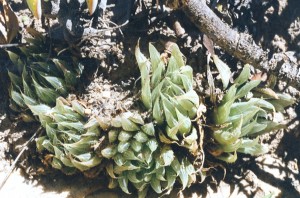
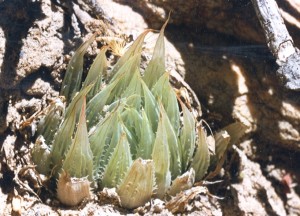

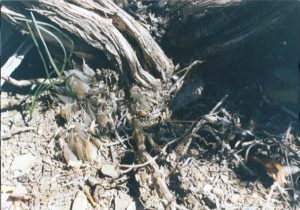
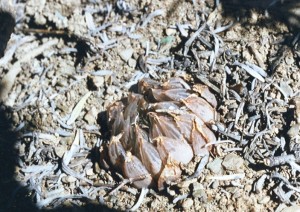
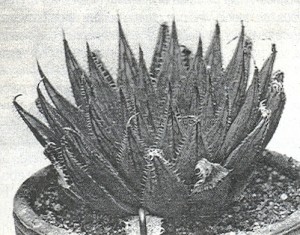
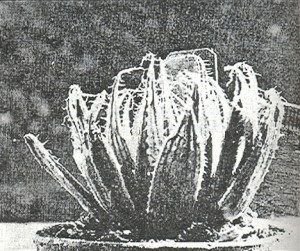
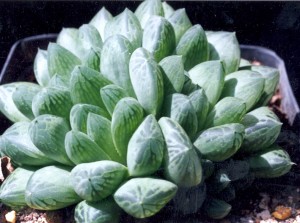
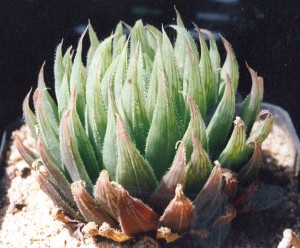
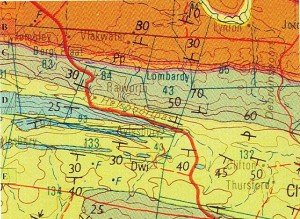
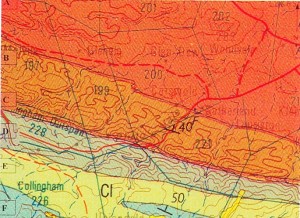

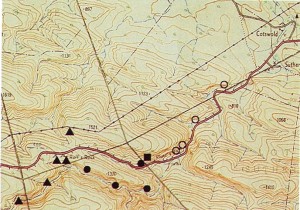
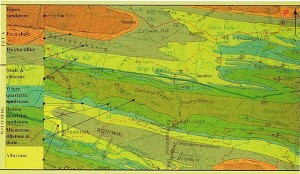
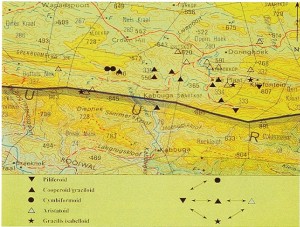
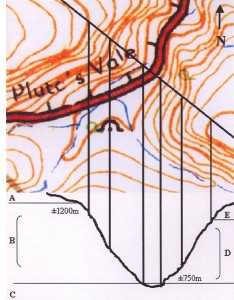
♦

Pingback: Some thoughts on recent literature of the Alooideae.